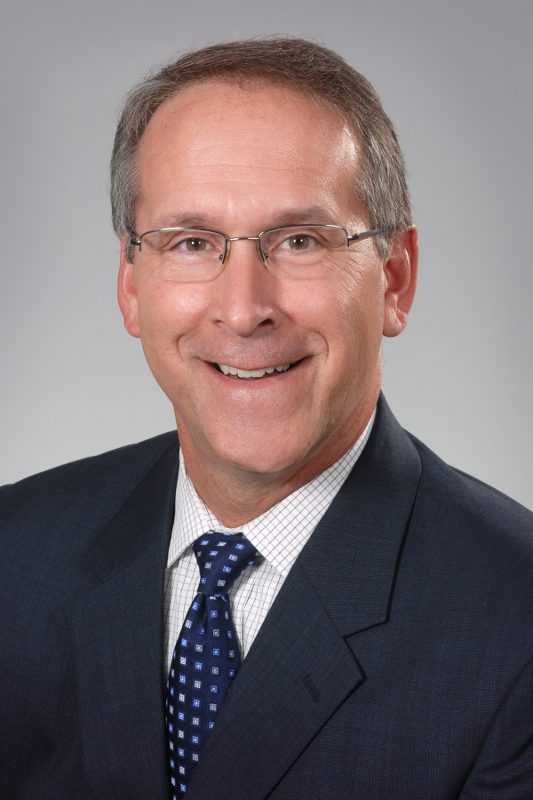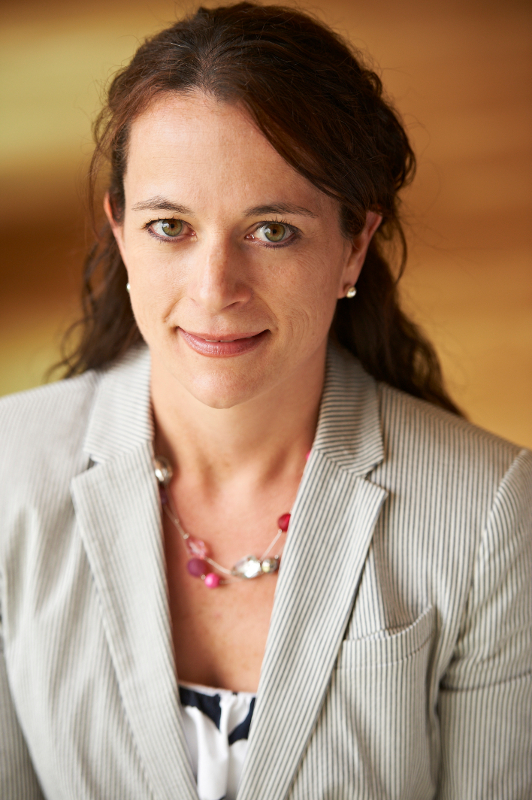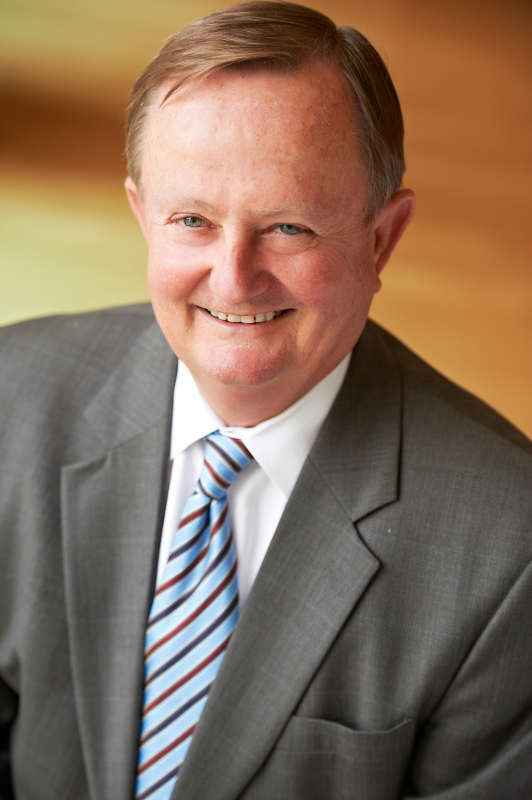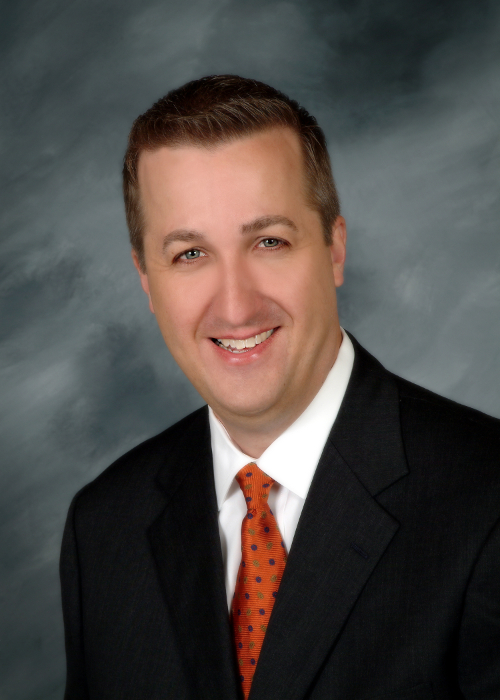Most hospitals and health systems across the country have had a laundry list of items on their health information technology checklists over the past several years, and refining the role of health IT will only become a more urgent and pressing issue as hospitals enter into year three of healthcare reform.
Here, five hospital and health system leaders — Rodger Baker, president and CEO, and Donna Staton, CIO, of Fauquier Health in Warrenton, Va.; Peter Banko, president and CEO of St. Vincent Health System, a Catholic Health Initiatives system based in Little Rock, Ark.; Chris Belmont, CIO of Ochsner Health System in New Orleans; and David Kaelber, MD, PhD, CMIO of MetroHealth in Cleveland — explain what health IT issues are at the top of their agenda next year, how "big data" should be interpreted in a health system, where telehealth fits into the picture and just how complex it can be to manage hundreds of different IT systems at once.
Question: Starting in 2013, what are the most pressing health IT issues and projects on your health system's plate?
Rodger Baker: We have efforts going on with our small number of employed physicians. We needed to replace their electronic medical record, and coincidentally, at the same time, we talked to our primary care physicians about some of the changes that were coming down the pike with value-based purchasing and accountable care. Certainly, primary care physicians are going to be integral in all of this. We asked them what we can work on together. They needed some help in re-evaluating their own EMR. Donna has led the evaluation and selection of a [EMR] product that we hope to purchase. We hope to subsidize some of the first-year costs, and we have some monies in our capital budget for 2013 for these costs. This [past] year was big for due diligence. They learned a lot, we learned a lot, and hopefully we have a good product the community can rally around.
Peter Banko: We just went live with our EHR, which is part of a $2.2 billion effort by Catholic Health Initiatives. We are the first system to go live with the Cerner OneCare. It's basically our shared, universal EHR, mostly on the acute-care side. We just went live before Thanksgiving. We also are doing a lot of work behind the scenes for data and clinically integrated networks, but our major thrust is this OneCare initiative with CHI. Chris Belmont: Our strategic initiatives can be broken down into four big buckets: One, core systems replacement. We are getting ready for meaningful use and are getting everyone on a common platform to exchange information amongst the organization. We went to Epic because our legacy platforms couldn't really support this. We are also doing that in the business areas, too. We are standardizing purchasing, payroll and the other business applications as well.
Chris Belmont: Our strategic initiatives can be broken down into four big buckets: One, core systems replacement. We are getting ready for meaningful use and are getting everyone on a common platform to exchange information amongst the organization. We went to Epic because our legacy platforms couldn't really support this. We are also doing that in the business areas, too. We are standardizing purchasing, payroll and the other business applications as well.
Two, infrastructure. How do we make sure [our technology's infrastructure] is secure and meets security requirements going forward? We are going toward more electronic and less paper — so you have to have good disaster recovery and business continuity initiatives. We are drastically reducing downtime and increasing responsiveness as well. Building a stable, high-performing infrastructure is important as we go completely digital.
Three, user experience. [IT systems] are somewhat of a scavenger hunt. If you want information, you have to know what system to go to. We have 225 different applications and systems that we know of, and that includes systems for our cafes and coffee shops and our fitness center locations, for example. You have to know where to go and what password to use, and we are trying to streamline that user experience for our employees to make our systems more intuitive and user-friendly. One way to do that is consolidate systems.
Four, analytics. How do we measure and do better with the data we have at our hands? That's the real game-changer. That's where we are going to focus a majority of our time. Healthcare is reactive, but we want to be proactive. We want to know what's happening right now so we can manage the population one month from now. Let me know what's going on with a population of diabetics, for example. How can I act on that to prevent them from having an event? Predictive analytics are going to be a game-changer. Dr. David Kaelber: One of the top issues is meaningful use. Not only is it making sure we're doing all things to be meaningful users now at stage 1, but how do we become stage 2 meaningful users as well? A theme related to that is enterprise-wide deployment of a single EHR. We installed an EHR, Epic, in the late 1990s: We installed outpatient Epic, then Epic in the emergency department, then inpatient Epic. But now, the real value of these systems comes from having the same system across all domains. One of the, I think, underappreciated values of health information systems is the ability to integrate with each other. We've got to go with a single vendor among all these different systems.
Dr. David Kaelber: One of the top issues is meaningful use. Not only is it making sure we're doing all things to be meaningful users now at stage 1, but how do we become stage 2 meaningful users as well? A theme related to that is enterprise-wide deployment of a single EHR. We installed an EHR, Epic, in the late 1990s: We installed outpatient Epic, then Epic in the emergency department, then inpatient Epic. But now, the real value of these systems comes from having the same system across all domains. One of the, I think, underappreciated values of health information systems is the ability to integrate with each other. We've got to go with a single vendor among all these different systems.
Another major item is we've invested in EHRs going on 15 years. We have the tools and a ton of data, but now it's, "How do we use the tools with the data to really use the things that are meaningful to the healthcare system and our patients?" I've done work with Habitat for Humanity, and this is the analogy I use: The paper record is to the EHR as the manual hammer is to the power nail gun. If you know several skilled workers who know how to use a manual hammer, but you just give them a power nail gun and tell them to build a house, bad things can happen. There's no guarantee of high quality and safety. Once you have access to the new tool, you have to ask, "How can I redesign how I build this house to take advantage of this new tool I have?" Ultimately, the house will be built cheaper and faster because you've redesigned the system with the power nail gun in mind. If you try to deliver the same system of healthcare with EHRs, you're really undervaluing the power of the tool. You still want high-quality, safe, cost-effective healthcare, but you have to redesign the healthcare system with this tool at your disposal.
Donna Staton: [Another one of Fauquier Health's] drivers is patient engagement as we look at how we create more engaged patients. There are multiple ways with which to do that. In the near term, we're going to be rolling out a hospital-based patient portal. There will be standard capabilities such as paying bills online, looking at hospital records and so on. There will also be an "e-chart," and we launched it internally to employees. The last thing is certainly meaningful use. We were a meaningful use early adopter, and we are prepared and are positioned for stage 2 in October 2013. ICD-10 readiness and other back-office capabilities are also important.
Q: As healthcare becomes more digital, how is your organization attempting to make sense of "big data"? How are you coordinating strategies to streamline patient data and have it make sense for everyone?
PB: St. Vincent, in particular, is doing work with our national colleagues at CHI. The platform we're going for is consistent across CHI. The data we collect, and even for clinical pathways or order sets for physicians, are trying to be standardized across the country to set a standard around the quality of care that we provide.
CB: We are officially in "big data." Our data warehouse just eclipsed 1 billion rows of data. There's a lot of volume, velocity and complexity. We're trying to reduce variability there. In order to control costs, you have to reduce variability in the way you practice. We have been engaged in this for three-plus years.
DK: This is a very important question. My view is that healthcare is still far behind a lot of industries in ways we have to think about data. The reason you want data is you want to improve some sort of outcome. You have to start with outcomes you want to improve, and then go back and see how you need to visualize data to improve those outcomes. For example, we were talking with a pediatric gastroenterologist. She was new here and said, "I think I can be helping a lot more patients than I'm currently referred." You want to see more patients, so tell me what patients you want to see. She wants to see patients who are overweight and who need to have some recommended tests to see if [there are] liver problems. I said, "Wow, that's something the EHR can help out with." I can tell you who is overweight and who hasn't had the necessary test, and maybe those are the people we want to alert. Don't start with data. Start with a clinical issue you want to solve, and work backwards.  DS: As an organization, we are probably not as far along in that journey as I'd like us to be. To help us move forward, we do have some products [to organize data] that we use today that sit on top of our health information systems, and we have some big goals and objectives going into next year. It's the analogy: We are data-rich but information-poor.
DS: As an organization, we are probably not as far along in that journey as I'd like us to be. To help us move forward, we do have some products [to organize data] that we use today that sit on top of our health information systems, and we have some big goals and objectives going into next year. It's the analogy: We are data-rich but information-poor.
Q: What role are evidence-based protocols playing in your health IT initiatives?
PB: A large role — everything that we do clinically is evidence-based. We've taken this as an opportunity to consolidate practices. For example, our urologists in conjunction with CHI's urologists worked together to standardize 15 different order sets, which was one for each doctor, and now we just have one for prostatectomy. We used this as an opportunity to change the process and standardize clinical order sets that are used by physicians and nurses as well.
CB: Epic has ability for best practice alerts, or BPAs. Evidence-based medicine is about if you do certain things at certain times on a certain patient, [treatment] can be predictable. For example, a patient comes in with a cardiac event. They come in during normal business hours, and their length of stay may be 1.5 days. But if they come in at Friday at 4 p.m., they don't get an ultrasound until Monday, and the patient might be here for four days. It's a length of stay issue that is inconveniencing the patient and costing us, the patient and the insurance company more. How do we apply the evidence we have to change behaviors? It may be having a tech on call at all hours to get the ultrasound, for example.
DK: We have a number on both inpatient and outpatient. One of the challenges is there are a ton of protocols. Some are evidence-based, some aren't. In a given period of time, the evidence and protocols change. One of the strategic decisions I'm thinking about is how do we wrestle with that as a single health system? We are not experts in mining all guidelines out there. We need somebody to sort what important guidelines should be followed but also notify us when those guidelines change. I'm trying to get to the point where I'm not reactive. We're trying to get a message from [another entity] to tell us the evidence has changed and the protocol is outdated.
DS: We are, up to this point, very manual in [evidence-based medicine], but we have had more clinical decision support this year. Standardizing care to produce consistent outcomes is important, especially as we look at value-based purchasing and other quality indicators we're going to be measuring. We've had a very loose process around that, but we're trying to bring more governance and structure to that this next year.
Q: What about telehealth? How are you expanding technology within rural areas and areas with less access? RB: We utilize telehealth right now. We have a certified telehealth stroke program through The Joint Commission. We only have one neurologist that will see patients in our hospital. But if a patient comes to the ED, they can connect in with eight other neurologists that we have a relationship with that can give advice to the ED physician. We think there's still more possibilities to expand telehealth in Virginia, especially with behavioral health. We need to figure out how to get more access to more people.
RB: We utilize telehealth right now. We have a certified telehealth stroke program through The Joint Commission. We only have one neurologist that will see patients in our hospital. But if a patient comes to the ED, they can connect in with eight other neurologists that we have a relationship with that can give advice to the ED physician. We think there's still more possibilities to expand telehealth in Virginia, especially with behavioral health. We need to figure out how to get more access to more people.
PB: CHI nationally is developing a telehealth platform for us. We are still in the infancy stage of that. [In December], we launched a telehealth initiative with the University of Arkansas for Medical Sciences. Because UAMS is government funded, we assigned a team on how we can blend our two platforms together. We want to see how we can better reach out to [those in rural areas], initially in cardiology and neuroscience. Arkansas still has a lot of hospitals that are independent and unaffiliated, so it is a little bit of a longer process for us to deal with.
CB: We have a pretty strong and growing telemedicine practice. It started with our stroke telemedicine program that's now accredited by The Joint Commission, but the most innovative thing is our eICU program, through which we can monitor intensive care unit beds remotely. We can have one physician monitoring 80 beds, for instance. If there's an event, an alert may fire off. A nurse can also go in virtually, look at the monitor, medications and the chart in Epic and decide if any action needs to take place. The physician who is in the "bunker" with her can place orders and give instructions to nurses who are actually in the room. This will allow us to reach out to smaller rural hospitals that don't have the ability to keep intensivists on staff.
DK: This is an interesting area. I received an informatics scholarship studying telehealth. For our country, there's still a huge untapped potential for telehealth. Having said that, I'd break it down into a couple areas. There are three main areas for telehealth. One is provider-to-provider telehealth. For PTP, I'm a provider maybe in a rural area, maybe not, but I need help managing a patient. I want to reach out to another provider for their help in managing this patient. Two-way video is a common image that comes to mind. I actually think that's a relatively inefficient way for telehealth. The value of video for telehealth is just not always needed. I see the value in always seeing the patient.
A second area is home health or a nursing home. Maybe a patient connects with a provider and has a real-time cardiac monitor or digital scale. That's a big area of growth. But my view is we haven't reaching a tipping point in telehealth in the U.S. yet. There are regulatory and financial barriers. For regulatory, at least in 2012, in most states, your license to practice is geographically constrained. If I lived in Cincinnati, and people who live in Kentucky telehealth me from Kentucky, technically I can't help them. Some states are working on that now, though. Financially, from my view — I'm not an expert — most payors will not pay for anything except for a face-to-face visit.
I would argue the last type of telehealth is if I get a call or email about a medical problem, and I give you medical advice I'm liable for. In most medical settings, I can't charge for that. But in the grand scheme of things, if I can't be reimbursed for that, I'm limited in what I can do. Q: Do you see population health management as the key driver behind health IT projects right now?
Q: Do you see population health management as the key driver behind health IT projects right now?
PB: We'll have a deeper data set [through our universal EHR], and we can link that across the continuum so you can move to population health. That's the next step for us. Building deep data in each clinical setting that will help us connect to population health.
CB: As healthcare morphs and changes over time with healthcare reform, we are going to be incentivized to manage the population and not admissions and visits. It's more beneficial for us, over time, to keep people from coming in. If we're capitated to cover that patient, it costs us every time they come in. It's also better for the community to keep everyone well. We need to use our tools to interact with patients — how can we prevent events from occurring? We're also going to be penalized for readmissions in the future. The areas we are focused on through technology are diabetes, smoking cessation, behavior changes and congestive heart failure. We need to start interacting with patients differently.
DK: Population health management is an important driver of some health IT projects. It follows the paradigm like when you asked about big data. My view is as a society, the healthcare system is still trying to wrestle with how much of our resources should be spent on population-level management versus how much should be based on a face-to-face level. You can see how this dovetails with healthcare reform. As of now, there are not a huge number of financial incentives for health systems to manage populations, but that will be changing. At least at [MetroHealth], it's raised to a higher level, and that will trickle down. Health IT tools will help with this.
DS: We've had a focus in the past year around the care continuum, especially certain populations. Like other hospitals and organizations in the industry, we are trying to figure out how we can gain traction in that front. We are targeting specific populations and are looking to mature that.
Q: How many actual IT systems does your hospital/health system have? Is it a nightmare trying to synchronize them?
CB: We have 225 systems. Is it a nightmare? Yeah, but it works. It's not the easiest way. With Epic, we're eliminating 38 duplicating systems, and we're also eliminating 450 interfaces. That's an IT operational benefit, but that's also a benefit that data is always in sync. If you change a patient's weight, for example every department on Epic sees that. It doesn't get translated or anything like that. It's all on one database.
DK: We probably have about a couple hundred systems. There's a lot of work in installing a system. The challenge is some people look at that and ask, "Why take out a system we've spent a ton money on already? What's value proposition of that?" I think what we've done at MetroHealth is 10 years ago, with that sort of discussion, you never would've been able to get past that. Now as we become a more sophisticated clinical information system user, we understand the hidden costs of having a fully integrated system.
DS: We have a fairly standardized approach. There are a lot of specialties with specific needs, such as imaging and a [picture archiving and communication system], and we have 25 core systems that we support across the clinical and nonclinical areas. It's complex. As you bring new systems, it just adds to the level of complexity. It is not easy to acquire and maintain a competitive IT staff to manage these systems on a day-to-day basis, but we have really updated our IT portfolio drastically in the past five years. And we now have a good basis of health IT to serve our community.
More Articles on Hospital Executives and Health IT:
Weathering Hurricane Sandy and Other HIT Challenges: Q&A With CIO Kumar Chatani
Blazing New Trails: 7 Successful Leadership Practices of Today's Top Hospital CIOs
Ahead of the Meaningful Use Curve: Q&A With CEO Chuck Sted and CIO Steve Robertson of Hawaii Pacific Health

